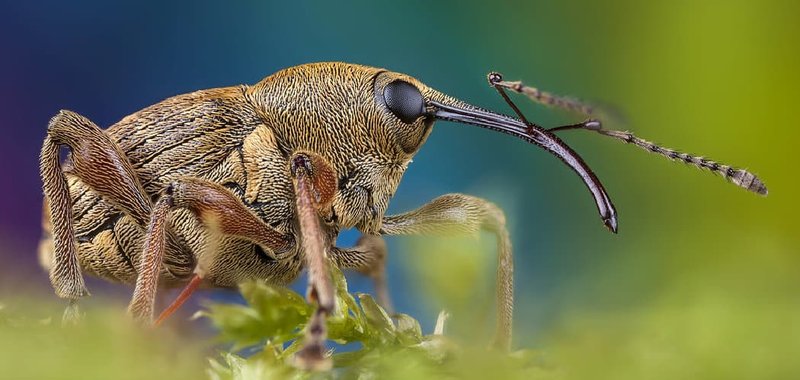
Think of the weevil as a kind of cultural mirror, reflecting the beliefs and values of the societies that recognize them. They’re not just pests; in some cultures, they symbolize resilience, resourcefulness, and even the cycle of life and decay. Let’s dive into the fascinating world of weevils and explore how they’ve made their mark across different cultures and what they symbolize.
What Are Weevils? A Quick Overview
Weevils are a type of beetle belonging to the family of Curculionoidea. They typically have a distinct elongated snout, which sets them apart from other insects. There are over 60,000 species of weevils, each with unique characteristics and habitats. Most commonly found in agricultural settings, these little critters are notorious for damaging crops like grains and nuts.
You might be wondering why something that causes so much trouble in farming could be symbolic at all. Well, it turns out that their adaptability—their ability to thrive in various environments—has led them to be viewed differently in cultures around the globe. Weevils can be seen as a testament to survival against the odds, which resonates deeply with many people.
The Weevil as a Symbol of Resilience
In many cultures, the weevil represents resilience. These hardy little bugs can survive in harsh environments, a trait that people often admire. For countless societies, this symbolizes the ability to endure hardships and come out stronger on the other side.
Think about it: farmers have seen their crops devastated by weevil infestations. Yet, these beetles continue to thrive. This struggle can reflect human experiences with challenges, making the weevil a powerful symbol of perseverance. In folklore, stories often depict characters who, like the weevil, must overcome great obstacles, embodying the spirit of resilience.
Weevils in Folklore and Mythology
In various cultures, weevils appear in folklore and mythology, often with unique stories attached to them. For instance, in some African traditions, the weevil is seen as a trickster figure, akin to the coyote in Native American stories. These tales typically illustrate not only the cleverness of the weevil but also human traits, creating a connection between the two.
In other cultures, weevils are viewed as harbingers of change. Just as they transform the grains they infest, they can represent the cycle of life, death, and rebirth. This can tie into agricultural practices and seasons, where the arrival of weevils signifies a shift, prompting farmers to adapt and change their strategies.
Weevils in Art and Literature
Throughout history, artists and writers have found inspiration in the weevil. In visual arts, you might find weevils depicted in paintings, symbolizing the beauty of the natural world—even the creatures that are often considered pests.
In literature, authors have used the weevil as a metaphor for decay and transformation. For example, in a poignant story about agriculture, a weevil infestation could represent the struggle between nature and humanity, symbolizing the fragility of life. This duality—where weevils are both destructive and transformative—adds depth to their cultural symbolism.
The Weevil’s Role in Agriculture and Food Security
Weevils play a significant role in agriculture, impacting food security worldwide. While they are often seen as pests that damage crops, they can also symbolize the challenges farmers face. The struggle against weevil infestations highlights the larger issues of food production and sustainability.
In developing countries, weevil infestations can lead to significant losses, affecting local economies and food availability. This struggle can push communities to innovate, finding new methods of pest control or crop management that not only address the weevil problem but also improve agricultural resilience overall. The weevil’s role in this context serves as a reminder of the balance between nature and human intervention.
Weevils as a Symbol of Change and Adaptation
As mentioned earlier, weevils embody adaptation. They’ve developed the ability to thrive in diverse environments, which is something we can all relate to in our fast-paced world. Just as weevils adapt to survive, so too must we as individuals and communities navigate changes in our lives.
This symbolism of adaptation ties back to personal growth and transformation. When we face challenges (like dealing with a pesky weevil infestation), we can emerge stronger and wiser. This idea resonates with many people, reminding us that change is not only inevitable but can also lead to positive outcomes.
Final Thoughts on the Weevil’s Cultural Significance
The cultural symbolism of the weevil is rich and varied, reflecting resilience, transformation, and adaptation. From folklore to agriculture, these tiny creatures have carved out a place in human stories and experiences. They remind us of the challenges we all face and the strength found in overcoming adversity.
Next time you spot a weevil, take a moment to appreciate its significance. While it might be easy to dismiss them as mere pests, these beetles are far more complex. They teach us about the beauty of survival, the importance of change, and the interconnectedness of life. In the grand tapestry of cultural symbolism, the weevil holds a unique and essential thread.
